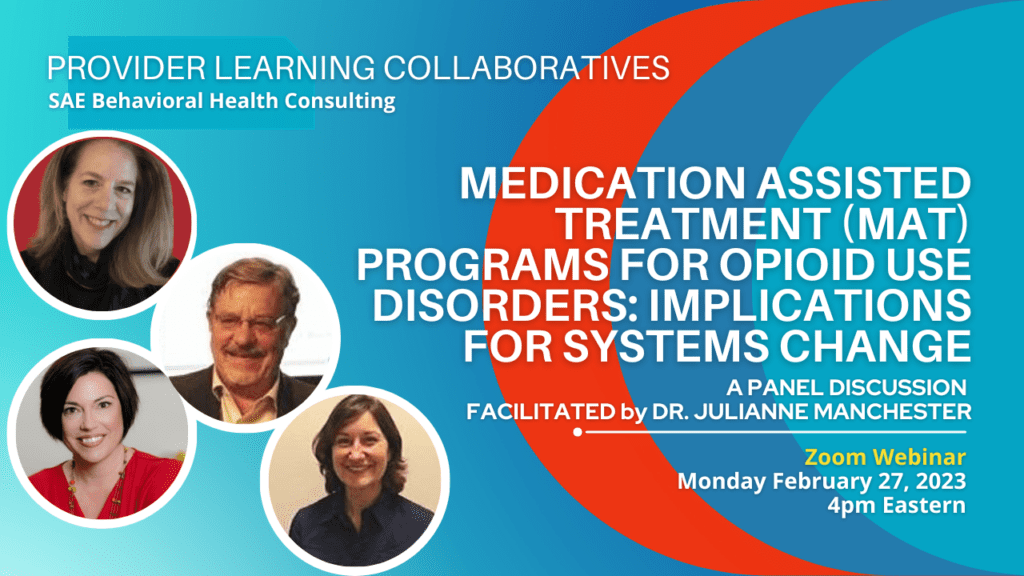Medication Assisted Treatment (MAT) programs are an important part of treating opioid use disorders, combining medications, counseling, and other therapeutic techniques to provide a comprehensive approach to treatment, and have been shown to be effective in helping individuals with opioid use disorders reduce their risk of overdose. As consulting expert Tara Kunkel has summarized, “MAT programs are saving lives.”
In this PLC, expert panelists discuss how MAT can be implemented in different settings such as outpatient clinics and corrections facilities and highlight obstacles to and solutions around introducing MAT into systems, such as forming collaborative partnerships and adjusting workflow. Finally, they discuss strategies for overcoming challenges related to client engagement and program retention, specifically through the lens of performance improvement measures.
We welcome you into this discussion and look forward to any questions you may have as a result. Together, we can work to increase access to MAT and reduce the number of lives lost to addiction. Thank you for joining us!
Scroll down to meet the panel of experts and review the learning objectives.
Panel Description:
As opioid use dependence and overdoses continue to impact communities, more mental health and substance use disorder treatment providers are implementing Medication Assisted Treatment (MAT) programs. In this PLC, expert panelists will address how medications for opioid use disorder have been introduced in different organizational settings, including outpatient clinics and corrections.
The conversation will highlight ways to adopt MAT within systems while anticipating and navigating changes to workflow, team dynamics, and other systemic factors. Retaining clients in MAT programs, while navigating systems (children and family, clinical, corrections) challenges, will be discussed.
Learning Objectives:



Areas of Expertise:
Norwig Debye-Saxinger
- Government’s policy and funding actions to report on and quell the drug abuse epidemic;
- Prevention and Treatment via current “harm reduction” policy initiatives;
- Funding for MAT, safe injection sites and corresponding regulatory changes;
- Metrics to measure and report on the effects of policy and funding initiatives.
Tara Kunkel, MSW
- The changing landscape of MOUD in carceral settings and the drivers of that change (lawsuits, funding, technical assistance);
- The latest game changer – CMS’ approval of California’s 1115 Medicaid waiver in January;
- Funding for MOUD in jail and probation settings;
- Technical assistance to support the implementation of MOUD in jail and probation settings;
- Performance measures for jail based MOUD.
Melissa Heinen, RN, MPH
- Community and cultural considerations: culturally-informed services & servicing the whole client;
- Socio-ecological model;
- Influences & interactions;
- Performance improvement measures for better outcomes.
Check back for the recording. | Download the slide deck with shared links.


